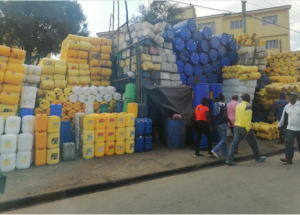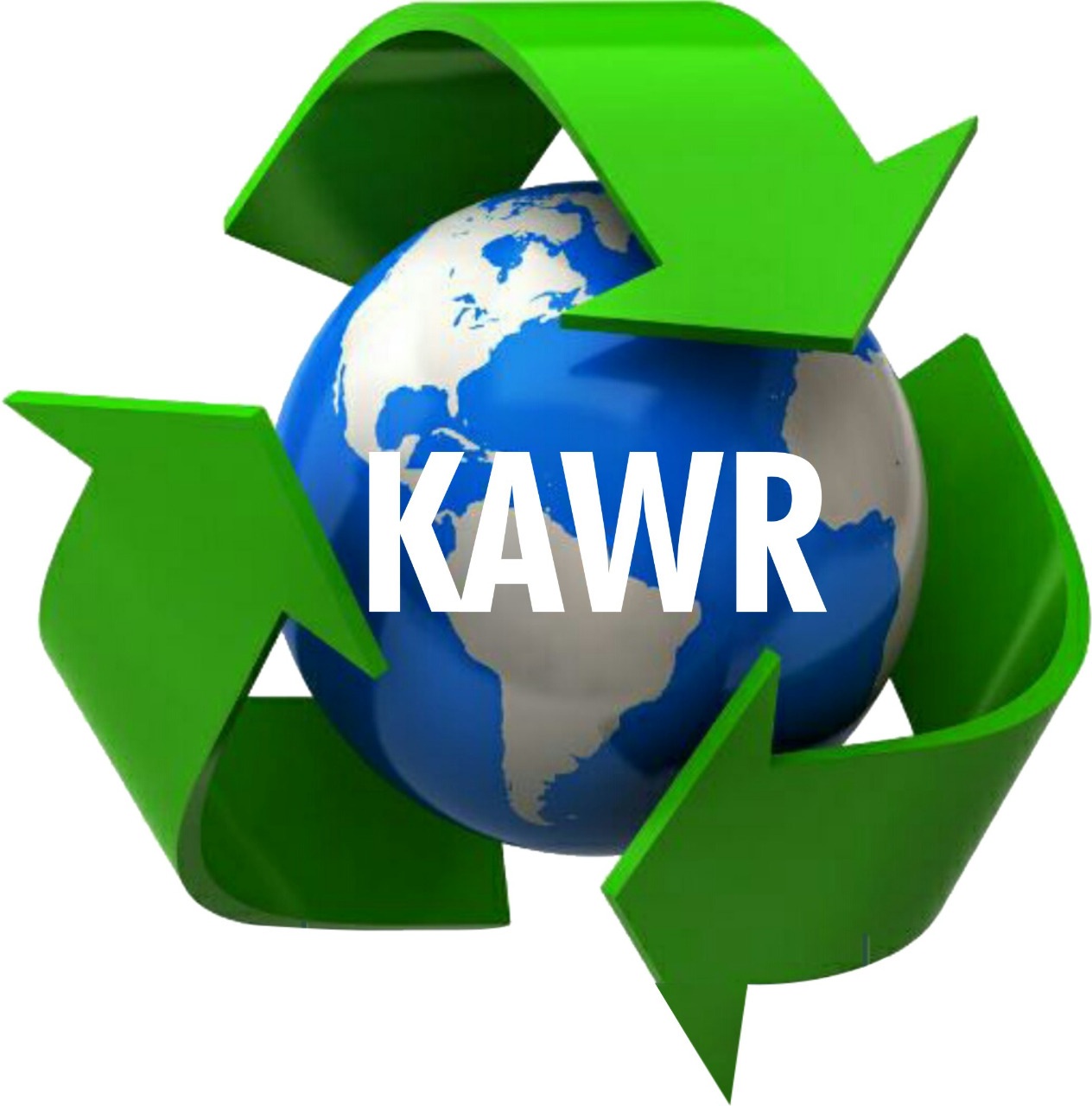As Extended Producer Responsibility (EPR) frameworks reshapes the landscape of waste
management, a new chapter of responsibility unfolds across industries, communities, and
governments. No longer are waste recyclers or municipal entities alone in bearing the
burden of waste disposal costs—EPR has transferred the liability to producers, putting
onus on them to manage the life cycle of their products. This shift is necessary as well
brings new challenges and opportunities for innovation. As the Secretary General of the
Kenya Association of Waste Recyclers (KAWR), I’d like to reflect on how innovation might
relieve some of the cost pressures inherent in sustainable waste disposal, and explore how
far and deep the journey toward these remedies might take us.
The Need for Innovation in the EPR Era

Figure 1:Apacking Reuse market in downtown Nairobi
With EPR policies, producers are required to integrate end-of-life management costs into
their product pricing. As a result, we are witnessing increased scrutiny on the entire value
chain—from material selection, design to disposal and recycling. This shift is critical for
creating a more circular economy but comes with significant financial implications,
particularly for small and medium-sized producers who will struggle with the added
expense of sustainable waste management.
Here, innovation becomes essential. The introduction of smart, cost-effective waste
management technologies can reduce the financial strain on producers and ultimately
benefit all stakeholders in the circular economy. In Kenya, where recycling and waste
management sectors are still developing, we need an innovative ecosystem that addresses
local constraints, encourages collaboration and optimizes both human and financial
resources.
Recycling Education and Public Sensitization
It is common to think of technology every
time we have an issue requiring innovation,
but there is a lot that can be achieved
through educating communities on best
practice in waste management, particularly,
a consumer who is educated will conserve
the value/purity of a packaging by
separating it from contaminants, will seek to
reuse/utilize a packaging before finally
putting it into the bin. These simple acts
could make a huge difference in lowering
the costs of collection,processing and
recycling. More can be achieved through
influencing consumer behavior, for instance, rinsing and folding or compressing a
packaging before binning.Finally, opening up the recycling market to the public through
dissemination on the value of recyclables in areas with low awareness outreach.
Leveraging Technology to Reduce Disposal Costs
Advanced technologies, like AI and IoT, offer promising solutions to alleviate the financial
burdens of sustainable waste disposal. For instance, data analytics can help producers

Figure 2:An innovative approach to solving disposal of
problematic waste PET straps into tea harvesting baskets,
as showcased here by Pura Terra Recycling Ltd in Nairobi
and recyclers gain insight into material recovery rates, predict contamination issues, and
manage collection routes more efficiently. Integrating these systems can lead to greater
precision in waste management, minimizing both time and cost. Such technologies,
however, require initial investment, training, and continued support, which may seem
prohibitive to many stakeholders without government and private sector partnerships to
bridge the gap.
Blockchain technology also stands out as a revolutionary tool for EPR. Through blockchain,
producers and recyclers could track the lifecycle of every item from production to disposal,
ensuring transparency and accountability while minimizing compliance costs. This could
lead to reduced instances of waste leakage and improved accuracy in waste audits,
ultimately making sustainable disposal less costly.
Design Innovation for a Circular Economy
EPR encourages producers to rethink how products are designed, fostering a shift toward
eco-friendly materials that are easier and cheaper to recycle or dispose of sustainably.
Design innovation can be particularly impactful in reducing the total costs associated with
waste disposal.
For example, modular design can make it easier to disassemble and reuse materials from
complex products i.e electronics, and automotive ps etc. In addition, Mono or (single-type)
polymers facilitate recycling, which is more cost-effective and efficient than managing
composite/laminates/multi-layered materials. These design approaches, while demanding
substantial research and development, could reduce the volume and complexity of waste
that recyclers need to process, driving down costs for producers in the long term.
Financing and Public-Private Partnerships
To make these innovations accessible and economically viable, we need strong public-
private partnerships that offer financial incentives, subsidies, and funding for research and
development. Grants, tax breaks, and low-interest loans can provide vital support to
smaller companies and other prospective sector investments eager to implement
sustainable waste management solutions struggling with the cost.
Moreover, Community-Based Recycling Initiatives(CBRI)- like CBOs doing collective waste-
picking networks- can gain traction and scale with proper financing. Such initiatives tap
into local resources and, with the support of EPR frameworks, can contribute substantially
to circularity while keeping costs down.
How Deep and How Far Should We Go?
The journey to reduce the financial burden is both broad and complex. It requires a deep-
rooted commitment to building a circular economy that prioritizes eco-friendly design,
public sensitization, efficient processing, and robust policy enforcement. To meet these
demands, we must be prepared to invest in research, foster collaboration across sectors
and advocate for policies that support innovative solutions.
From Kenya Association of Waste Recyclers’s (KAWR) perspective, we aim to champion this
cause by engaging stakeholders in meaningful dialogues, advocating for policies that
support innovation, and collaborating with government agencies to create an enabling
environment for sustainable waste management. This journey may seem daunting, yet it’s
vital. We need a comprehensive approach that not only addresses the cost barriers today
but also lays the groundwork for a more circular, resilient future.
In conclusion, the EPR era calls upon us to rethink our responsibilities, innovation, and
investment in long-term solutions that support sustainable waste management. With
collaboration and a shared commitment to the circular economy, innovation can serve as
the key that unlocks more efficient, affordable, and sustainable waste disposal options for
producers, consumers, and recyclers alike. As Kenya navigates this journey, KAWR stands
ready to support, advocate, and lead the way. The challenge is vast, but the potential is
greater.
Let’s embrace this opportunity to redefine what’s possible in sustainable waste
management. The future demands it, and together, we can meet that call.
Richard Kainika
Nairobi 2024

